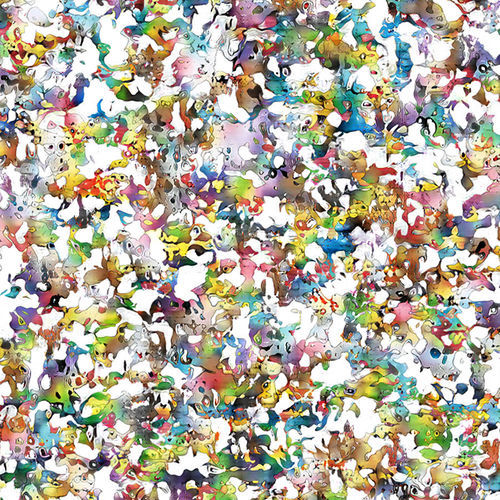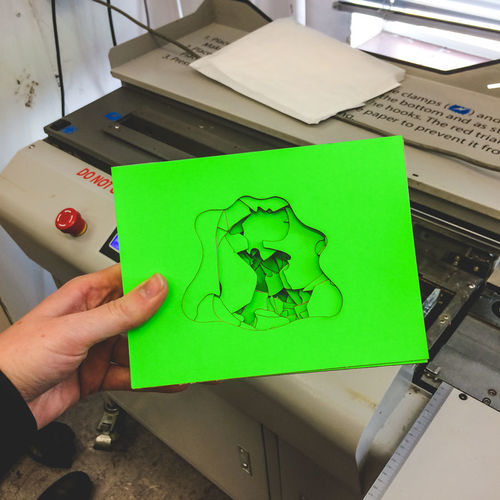User:0900998/year3
week 1 & 2 / project 1: on the body
An artefact for/on/or about the body
week 3 & 4 / project 2: inhuman factors / sensitivity training
A short film showing in the context of (in)human factors
first 4 videos
for the 10 second-videos we've explored stretching 4 different yogaposes to the point where people don't believe it's real anymore.
yoga pose 1 - https://youtu.be/WgFzPLByGYE

yoga pose 2 - https://youtu.be/k123sUIBNk0

yoga pose 3 - https://youtu.be/guqI5-AuKsI

yoga pose 4 - https://youtu.be/CegI04qY9Ts

final video
for the final video, we tried to alienate the yogaposes even more. we filmed a sequence, a series of poses, and exaggerated them in after effects.
we also filmed some closeups, to make the video more dynamic. then we turned the video black & white, inverted for a deeper effect. we recorded sounds in logic x pro to work/go with the weirdness of the movements.
(video is too big for a gif, you can view it on youtube :-))
yoga sequence black & white negative - https://www.youtube.com/watch?v=oOdf-jYyiho

week 5 & 6 / project 3: mind (of) the machine
A small "booklet" exploring the Mind [of] the Machine

ARTIFICIAL INTELLIGENCE
“the theory and development of computer systems able to perform tasks normally requiring human intelligence, such as visual perception, speech recognition, decisionmaking, and translation
between languages.”
THE COMPUTER
The reason why artificial intelligence (or AI) is so interesting has to do with the way computers work at the core level. Simplified, a computer works with things called bits. These bits can be set to either 1 or 0. They can also be read by the computer and be rewritten into another digit. These digits convert into greater numbers, which on their own can be converted into letters and words.
THE MIND
In the essence, computers are built around the writing and reading of exact numbers and words. Our human brains do not work with storing and reading digits. The brain consists of neurons, that interconnect with synapses. Electrical impulses flow through the brain all the time and are not in any way like computers process things. This makes the idea of an intelligent computer, that can simulate the human mind in some way, very strange and abstract.
THE SIMULATION
A common approach to making the computer behave like a mind is kind of the same as the way children grow up; learning them all about the subject of what the simulation is designed to do. This process of learning is the beginning of a process called machine learning. There are different techniques, do’s and don’ts when letting a program learn a certain expected output.
The source where the program is learning from (also called datasets) has to be very clean. For example: when you want a computer to recognize the difference between an apple and and orange. Training from a dataset that also has bananas and grapes in them will make the set so called ‘dirty’. This is a term for when a dataset has unwanted information in it, which wil result in a longer or distorted learning proces.
When the correct dataset is prepared, the process of training can begin. The images are fed into the algorythm, one by one, and read by color, composition and contrast. Every time an image is processed, a prediction is made by another algorythm that is based on what it already has seen.
This outcome is then fed by something called a ‘discriminator’. The function of this part is very important; it compares the new image to the dataset. This comparison gets a grade, wether the image ‘looks’ like the original or not. The higher the grade, the better the algorythm is trained.
CLASSIFICATION
The previous example of learning the difference between classes (apples and oranges) in the same superclass (fruit) is called classification. This algorythm of defining objects is at the basics of artificial intelligence: an expected output of the computer when you show it an orange. What you learn the program is what it will output.
DETECTION AND RECOGNITION
A step further on the path to (more) intelligent AI is a subject called recognition. Even though the idea of recognition is similar to classification, it requires a tougher learning process. The main concept why recognition is more difficult and different has to do with the fact that within recognition the subject that you want it to learn to classify can be a bit different to the pictures that you have shown it during the learning proces. A good example is learning the face of a specific person.
During it’s learning proces, the neural network has been trained to classify your face (assuming) from the front. A recognitial neural network would in this case also be able to classify your face when it is tilted, rotated from the camera, blocked by for instance a scarf or with different hair. A good example of a program like this is the new faceID of the iPhone X. Apple demonstrated that the neural network in the phone would be able to detect different hairstyles and facial appearances, and still be able to recognize that it is you.
Another example of detection and recognition are the cars that are made by Tesla. These high-end designers cars have a lot of interesting functions and sensors that allow the car to drive almost autonomously. This is done by a trained system that can recognize not only other cars, but also the type of signs, road markings and people on the sidewalk. Tesla’s neural network is so thoroughly tested that the company garuantee’s it’s safety at a very high level.
IMAGE GENERATION AND PREDICTION
The most intelligent concept of artificial intelligence (currently) is the idea that a computer can generate new content and images, based on what it has learned so far. If you think about it, this is getting already quite close to the human concept of what creativity can be.
When generating new images, the program uses a neural network that is based on the concepts of classification and recognition combined. But this time the dataset is used to keep testing the output, not only during the training process anymore like in the previous two examples.
The perfect example of this is the project that we did to create a new Pokémon. We fed the algorythm 500 different Pokémon, which it analysed on contrast, color and composition. Based on the principle of the discriminator, the program generated a new image based on each iteration of scanning the dataset.
This resulted in a sheet of ‘Pokémon’ that look very similar to the shape and color of the Pokémon we fed the trained neural network.
ONGOING PROCESS
For a long time, the development of artificial intelligence has been slow. But the last decade, interest in techniques that allow machines to learn, recognize, predict and assume has grown exponentially. At this point in time, the research on artificial intelligence has become so mature that it is even used in more and more commercial products, rather than staying in digital labs or experimental projects.
This clearly shows that the world is ready to embrace machine knowledge. For ages, the idea of a human-like computer have only been seen in sci-fi movies and futuristic predictions. But we think that a reality of humanesque computers are closer than ever before.


